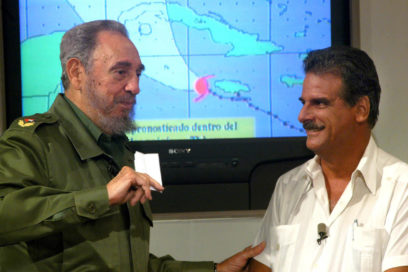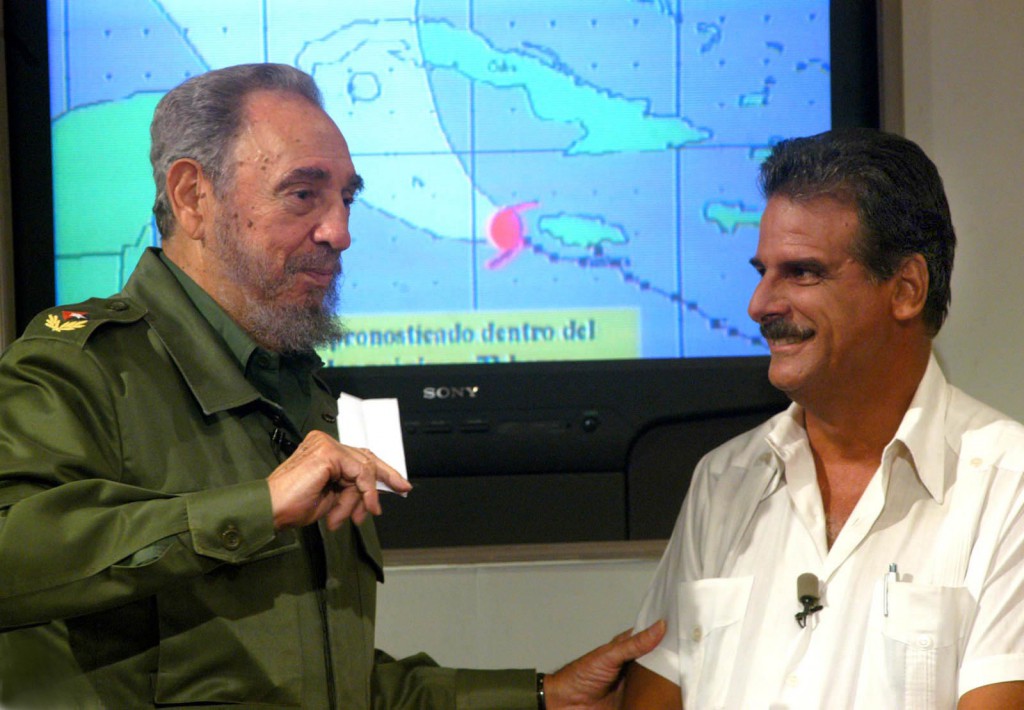By mid 1990s the relative peace in Cuba was suddenly broken in relation to cyclones hitting the country. Since then, some one really loved by the staff of the Center of Broadcast from the Cuban Meteorological Institute (Insmet), Commander in Chief Fidel Castro, who assiduity joined the staff during the imminent alert of those meteorological phenomena like heavy rains and the threat of the pushing in over the sea in the low fields of the Cuban territory.
“Fidel arrives at about five in the afternoon on October 17, 1996. There was a hurricane northeast the Caribbean Sea and in front of the computer I answered countless questions about the complex meteorological situation, because it was probably that in eight hours, Lili (name of the hurricane) would he hitting Havana City. Likewise a hollow, coming from the continent was moving east and should interact with the cyclone and turn it to the right.
Where and when would it happen, no one would know.
“Facing such tense scenario, we received Fidel’s unforgettable visit for about two hours,” says Doctor Jose Rubiera, director of the Center of Broadcast (CP) from Insmet.
“From 10:00 p.m., to 8:00 a.m, the following day he had a telephone communication with me from Batabano, Varadero and Jovellanos, to update himself on the situation. All the time he asked me if I had rested and I told him I did not. I thought, if he is awake, the least I should do is to follow him in this battle against nature.
“Winds were not only conspiring against us, but also the lack of experience in practice of the new staff and the old technology. It is all the contrary of what we have today. We did not have close information of the radar and the images from the satellite were neither direct nor of high resolution with delay in real time of one hour. Thanks to the information given by someone from a sugar mill, from Aguada de Pasajeros, we could determine the hole of the hurricane was passing b through over there and we warned them.
“And also, for the first time we used a wide route range from La Habana to Sancti Spiritus, and general perception was we made a wrong broadcast. Fidel asked me to explain on television all what had happened in details and told me: “Say the truth, we have to say the truth always, and they will all understand what happened.”
Respect and admiration
Two women used to see the formation and the triggering of these phenomena confess that nothing can compare with the phone conversations with the leader of the Cuban Revolution.
While they were assigned as shift bosses in the CP of the Insmet, Doctors Miriam Teresita Llanes and Gisell Aguilar Oro, say they had the honor to receive many of those calls during daybreak, above all in cyclonic period.
“He was worried in front of any meteorological event, although it was small, and its possible consequences. Not only linked to Cuba, but also with other countries like Katrina that lashed the North American territory of New Orleans with category four, in August 2005,” Says Gisell, who is an investigator specialist of the institution.
For both experts those conversations were professional exercise and at the same time a demonstration of humanism from Fidel.
They both confess without hesitating, they were more difficult than talking in front of a camera on television, although the colloquial language and simple used by Commander in Chief inspire them peace.



